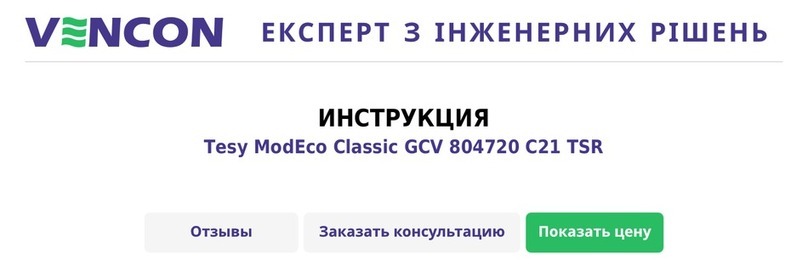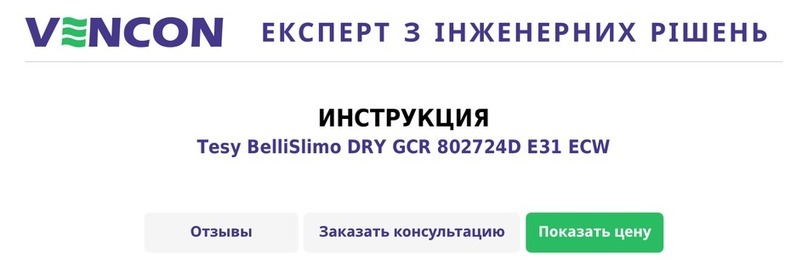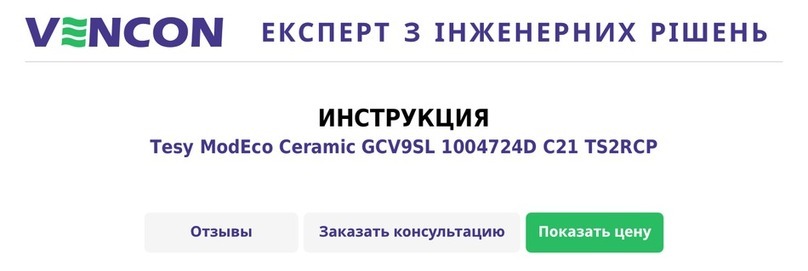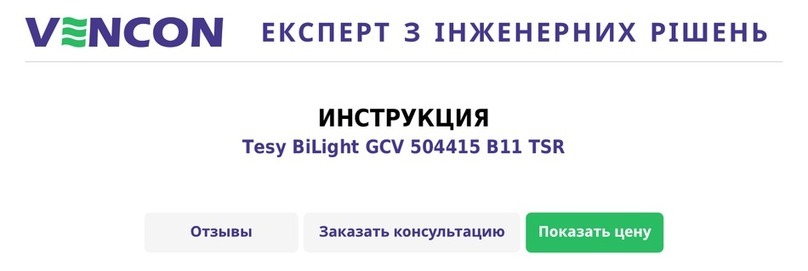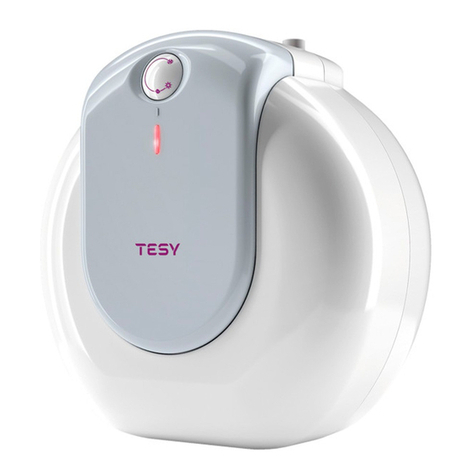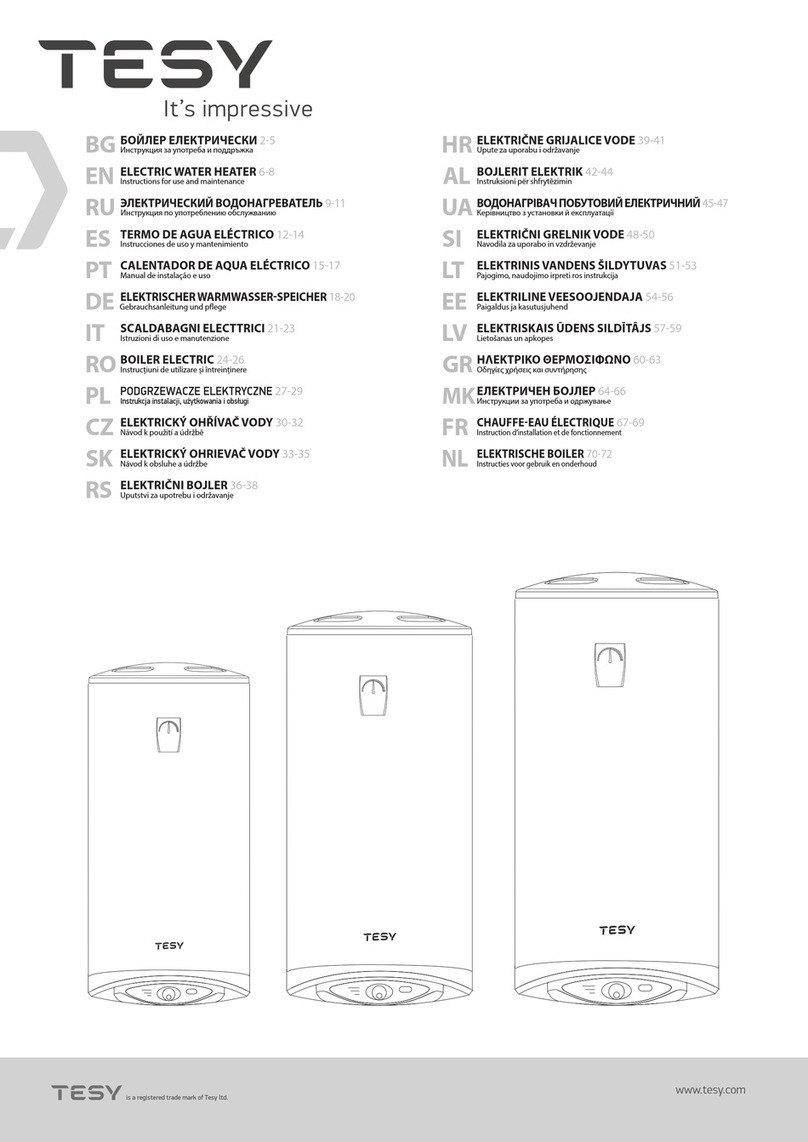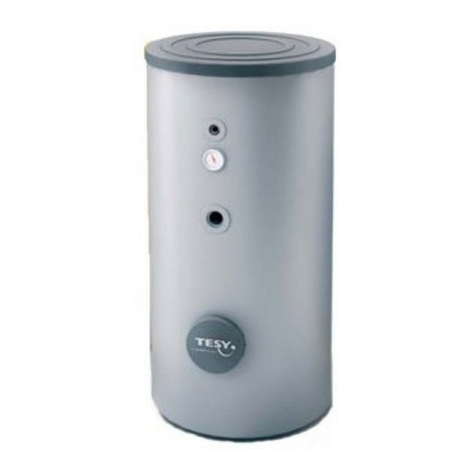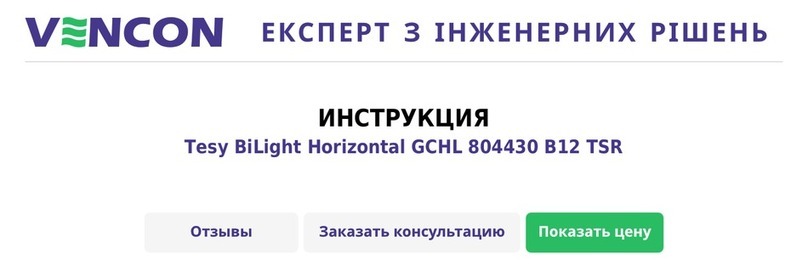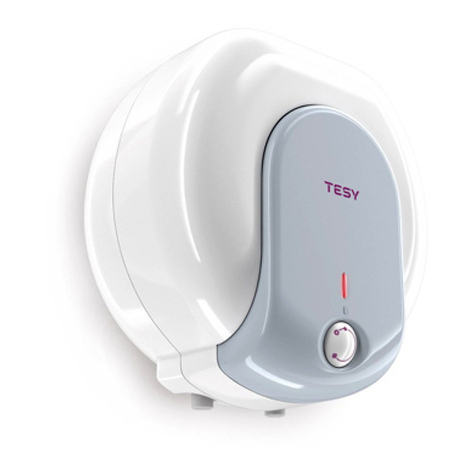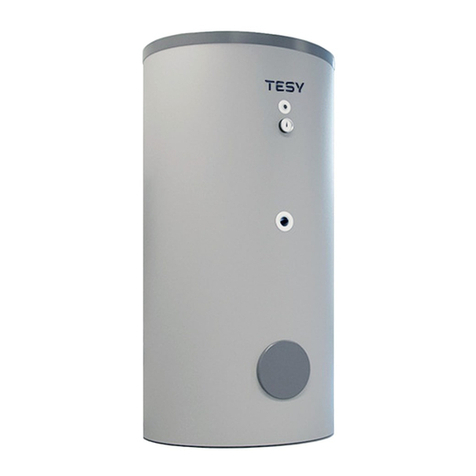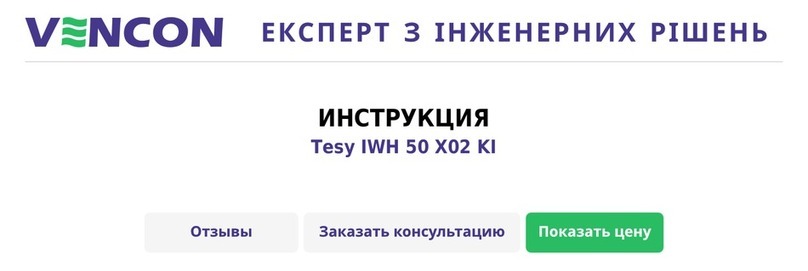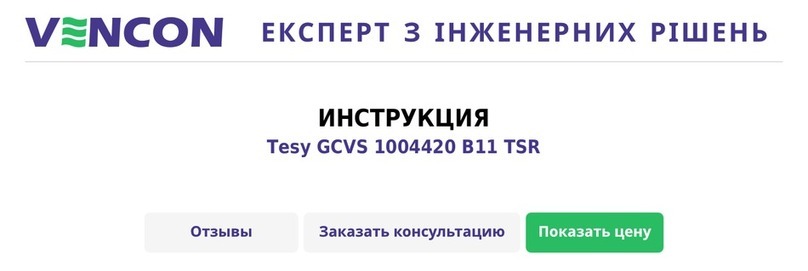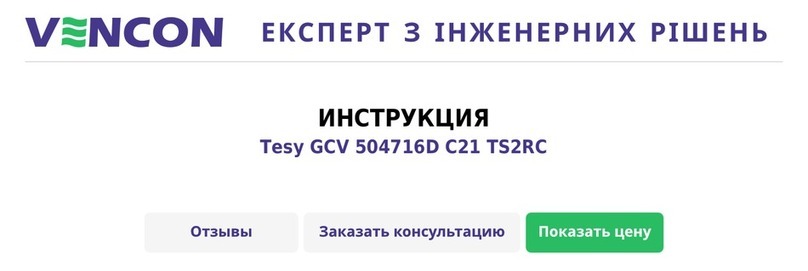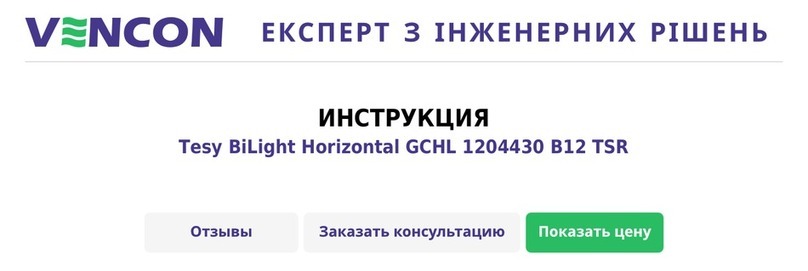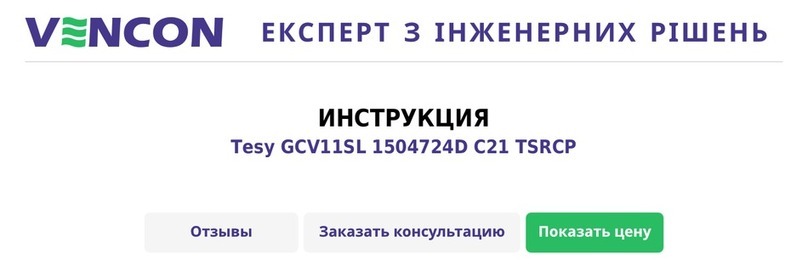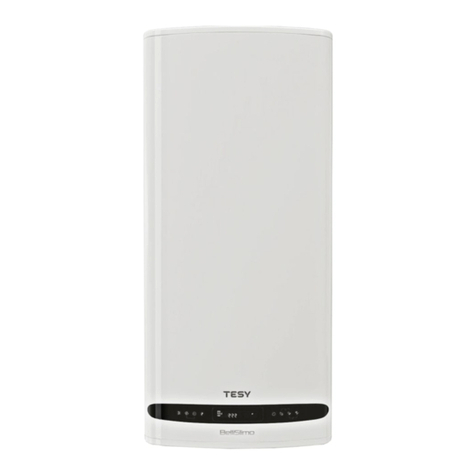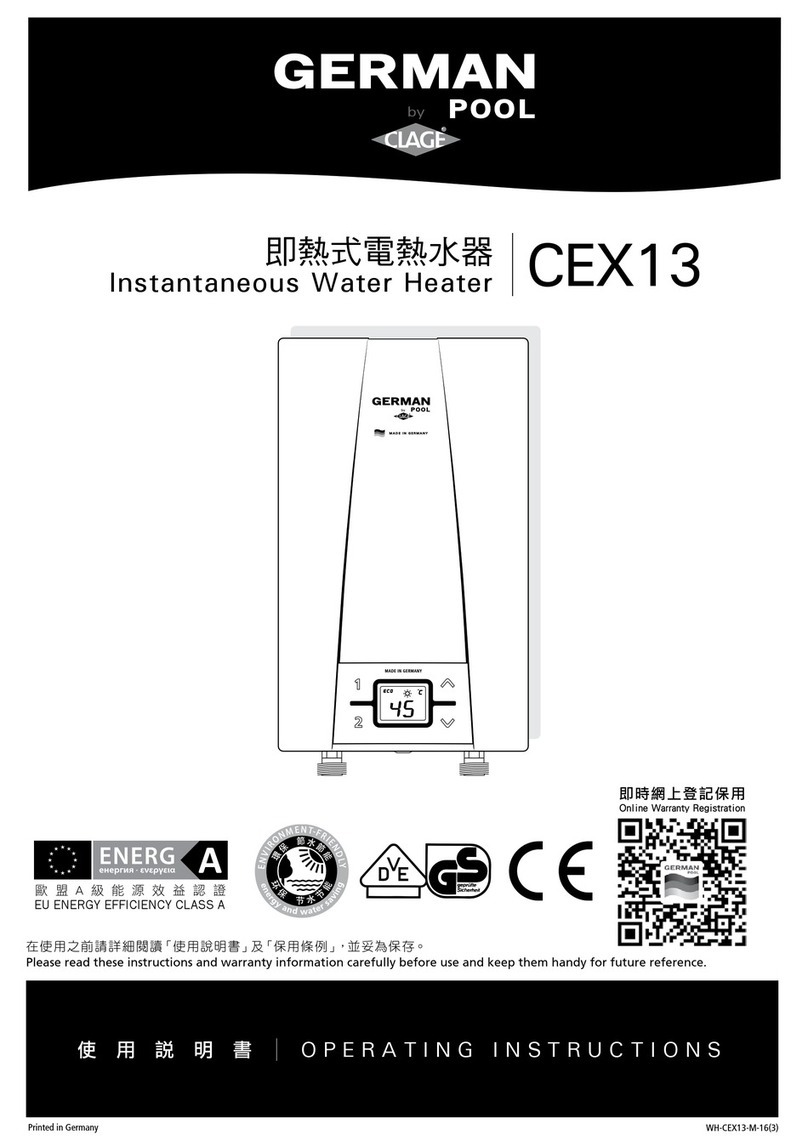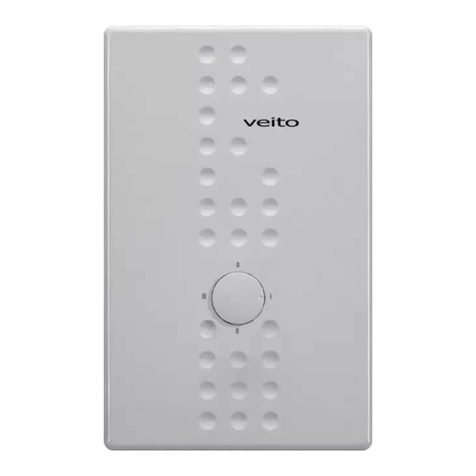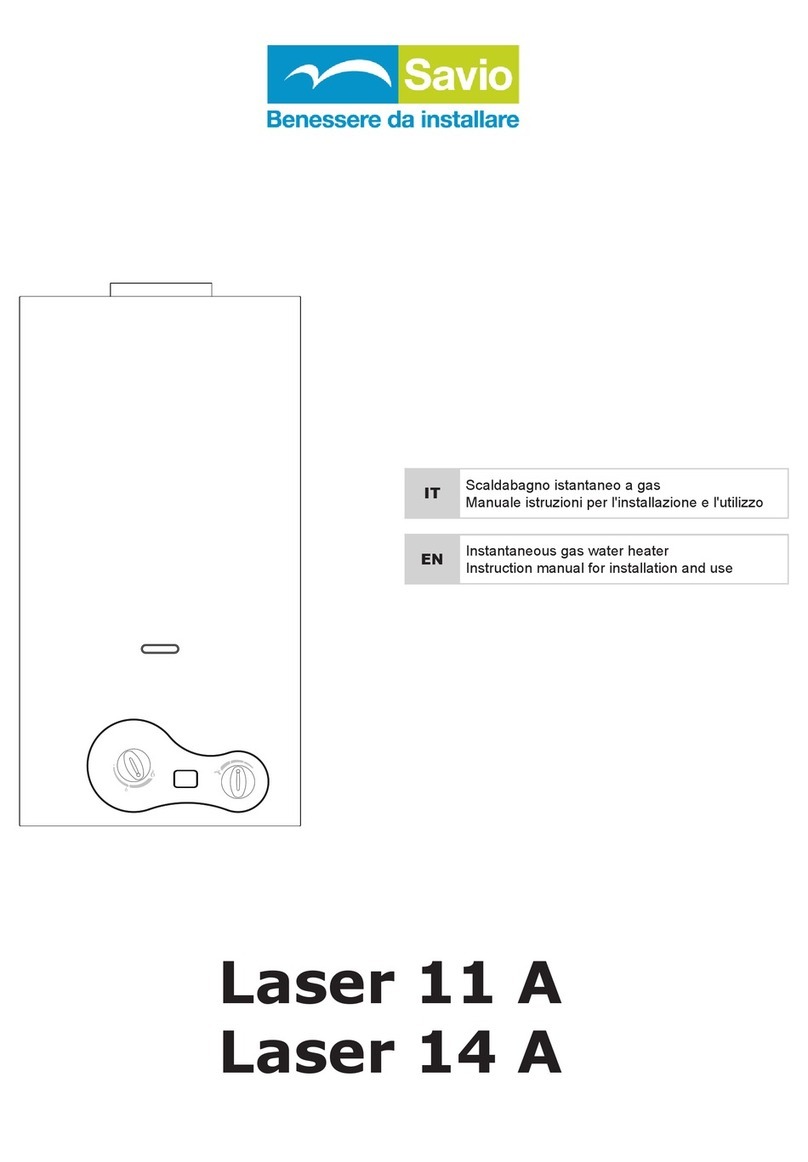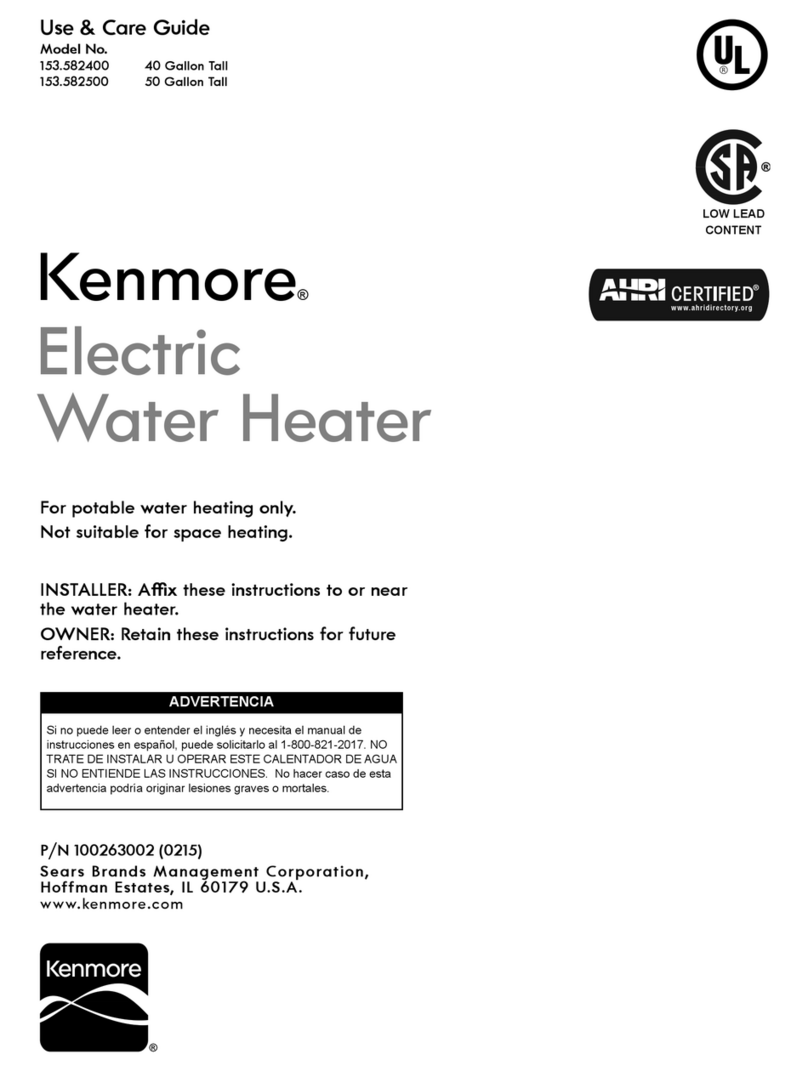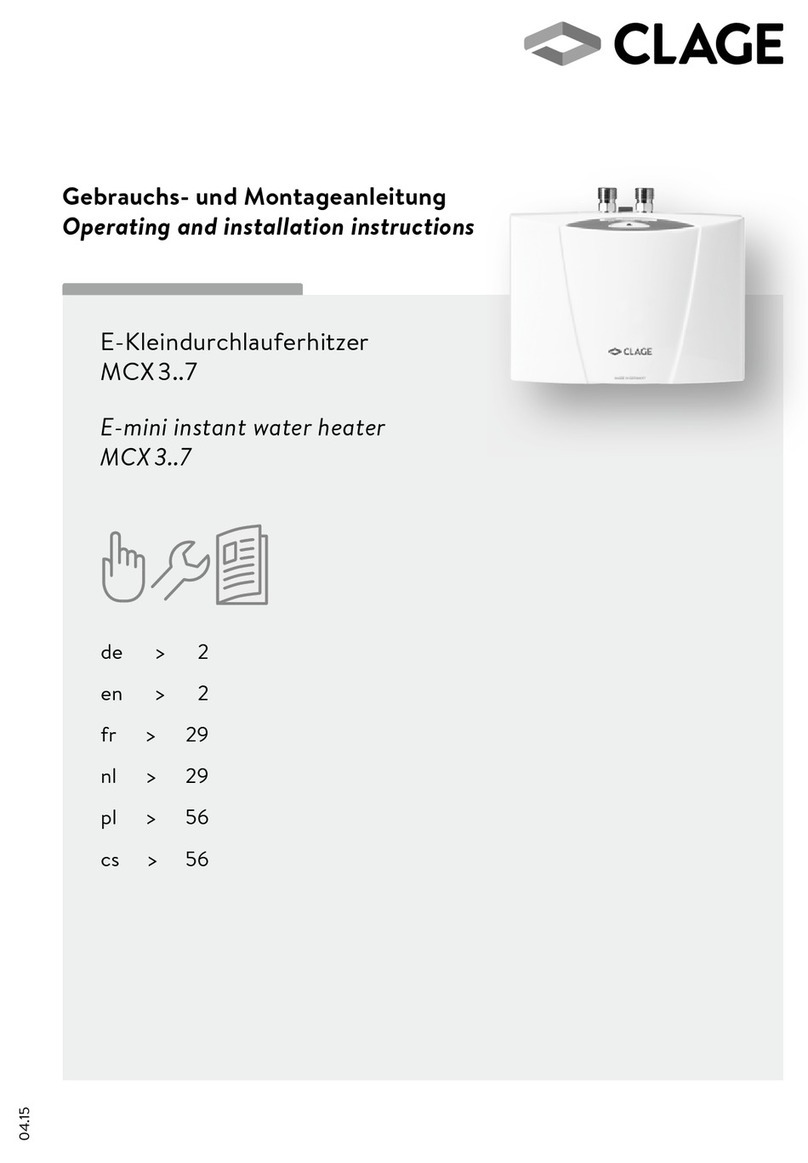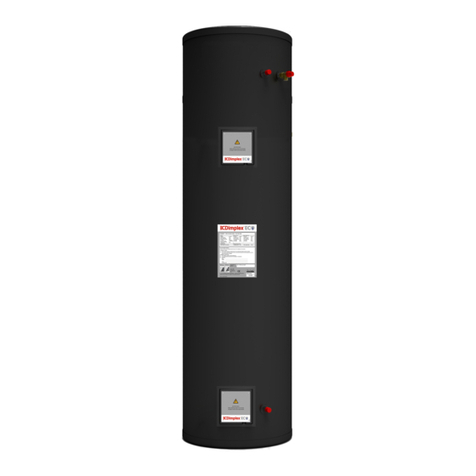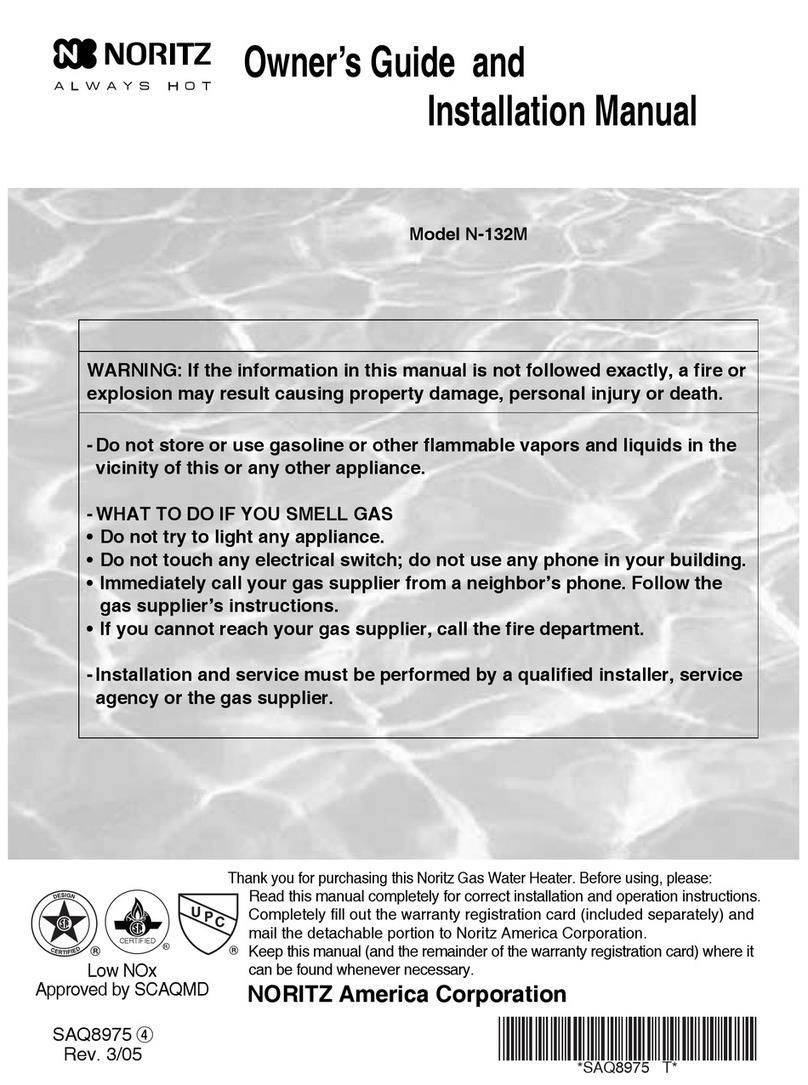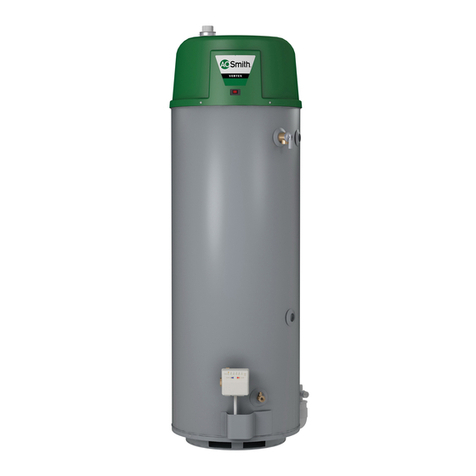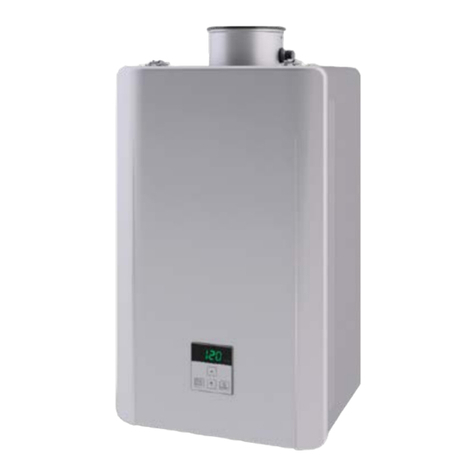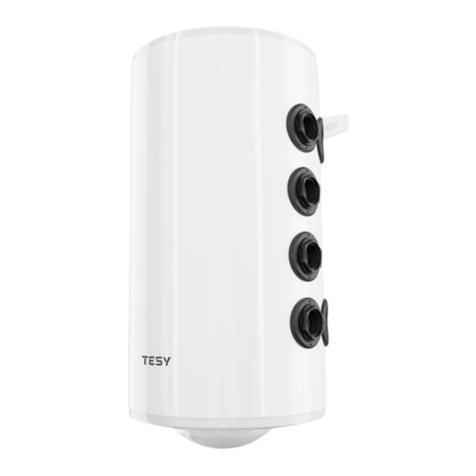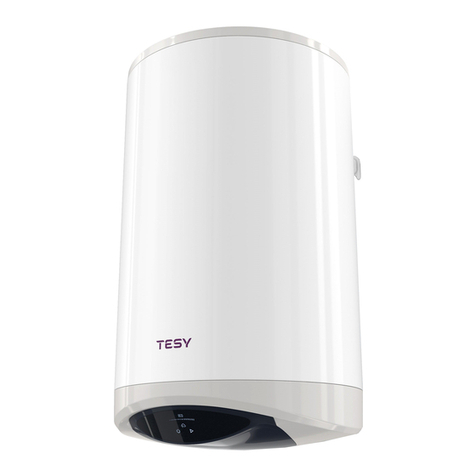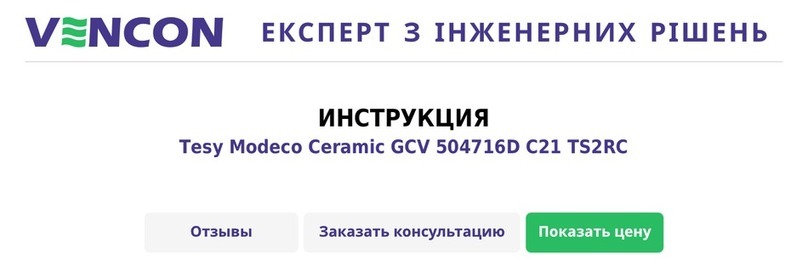
Instructions for use and maintenance 7
EN
English
III. DESCRIPTION AND PRINCIPLE OF OPERATION
The appliance consists of a body, ange, plastic control
panel, safety return valve.
1. The body consists of a steel reservoir (water
tank) and plastic housing (outer shell) with thermal
insulation placed in-between, and two pipes with
thread G ½“, for cold water supply (marked with a
blue ring) and hot water discharge (marked with a
red ring). The inner reservoir is made of steel proved
against corrosion by a special glass-ceramic coating
2. The ange is tted with electric heater and
magnesium anode protector. The ange is xed to
the water tank with bolts.
The electric heater heats the water in the tank and
is controlled by the thermostat, which automatically
maintains the preset temperature.
The plastic control panel incorporates: switch
(depending on model), adjustable thermostat
(depending on model), and thermal cut-out and
control lamps.
The thermal cut-out is a device, which switches
the heater o the power supply when the water
temperature reaches excessive values. If this device is
actuated, you should call a service station.
The signal lamps (depending on model) on the control
panel indicate the current mode of the unit.
The magnesium protector provides additional anti-
corrosion protection to the internal tank for heaters
tted with glass-ceramic coating.
3. The safety-return valve prevents the appliance‘s
complete emptying in the event of cold water
supply interruption. The valve protects the appliance
from pressure increases higher than the allowed
value during heating (! pressure will increase when
temperature increases), by releasing the excess
pressure through the drain outlet. Water dropping
out through the drains during the warming
process is a normal event that must be taken into
consideration when the boiler is installed.
ATTENTION! The safety-return valve cannot protect the
appliance in the event of water mains pressure in excess
of the acceptable pressure stated for the appliance.
IV. INSTALLATION AND SWITCH ON
Attention! Improper installation and connection of the
appliance may make it hazardous for the health and life of
consumers. It may cause grievous and permanent
consequences, including but not limited to physical injuries and/or
death. Improper installation and connection of the appliance may also
lead to damage to the consumers’ property /damage and/ or
destruction/, or to that of third persons, as a result of, but not limited to
ooding, explosion and/or re.
Installation, connection to the main water and power supply, and
putting into operation must be carried out by certied electricians
and technical personnel certied in installation of this category of
appliances, who have obtained their license in the state where the
installation and commissioning of the appliance are carried out, and in
compliance with its local legislation.
1. Installation
We recommend installation of the device at close
proximity to locations where hot water is used, in order
to reduce heat losses during water transportation. The
selected location must exclude the possibility of water
spray originating from the showerhead or other water
contacts.
The appliance is axed to a wall by means of
mounting brackets attached to the unit‘s body. Two
hooks are used to x the appliance (min. Ø 4 mm)
rmly on the wall (included in the mounting set). The
bearing plank construction for boilers installed above /
under sinks is universal and allows the space between
hooks to vary between 96 and 114mm. (g.2)
IMPORTANT: The type of boiler designed to be
installed UNDER / ABOVE a sink is marked on the
appliance. Boilers designed for installation above
sinks are assembled in such a manner that the outlet/
inlet pipes are pointed downwards (to the oor of the
premise). Boilers designed for installation under sinks
are assembled in such a manner that the outlet/inlet
pipes are pointed upwards (to the ceiling of the
premise).
For clear understanding of wall installation schemes,
please refer to g.2 (A above sink and B under sink).
ATTENTION! In order to prevent injury to user and third
persons in the event of faults in the hot water supply
system, the appliance must be mounted in premises outtted with
oor hydro insulation and sewer drainage. Don't place objects,
which are not waterproof under the appliance under any
circumstances. In the event of mounting the appliance in premises
without oor hydro insulation, a protective tank with a sewer
discharge drainage must be placed under the appliance.
Notice: the set does not include a protective tub and
the user must select the same.
2. Water heater connection to the water supply
system
Fig.4a - installation scheme above sink
Fig.4b - installation scheme under sink
Where: 1 – input pipe, 2 – safety valve (0.8 MPa), 3 –
reduction valve (if the water supply pressure exceeds
0,6 MPa), 4 – stop valve, 5 – bell-mouth discharge to
the sewer, 6 – hose; 7 - Drain water tap.
Upon connecting the water heater to the water supply
system, take care of the indicative color markings /
rings/ of the pipes:
BLUE - for cold /in-owing/ water,
RED - for hot /out-owig/ water.
The mounting of the safety return-valve supplied with
the water heater is obligatory. The safety return-valve
must be installed on the cold water supply pipe,
according to the arrow stamped on its body that
indicates the supplied water direction.
Exception: If the local regulations (norms) require
the usage of another protection valve or
mechanism (in accordance with EN 1487 or EN 1489),
then it must be bought additionally. For mechanisms
operating in accordance with EN 1487 the announced
operational pressure must be no more than 0.7 MPa. For
other protection valves, the pressure at which they are
calibrated must be 0.1 MPa lower than the one marked
on the appliance’s sign. In these cases the safety valve
which the appliance is supplied with should not be used.
